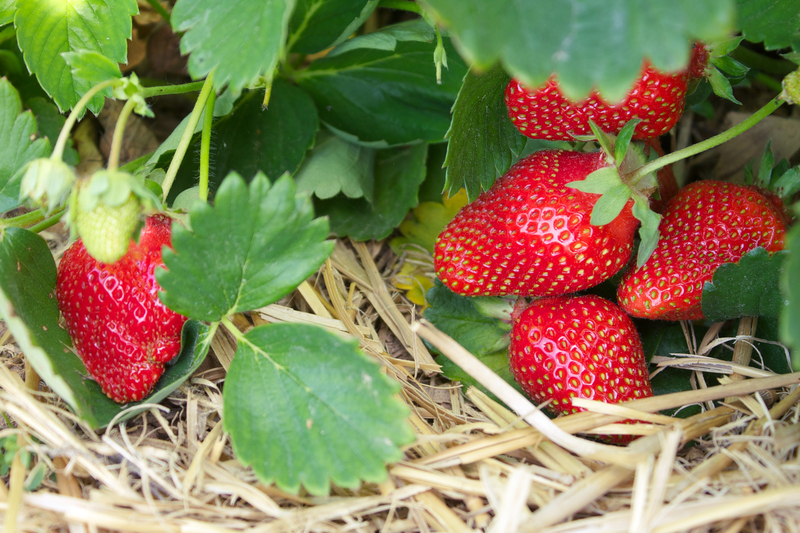Keep Your Plants Cozy: Tips for Winter Garden Protection
Posted on 13/06/2025
Keep Your Plants Cozy: Tips for Winter Garden Protection
As the chill of winter sets in, gardeners everywhere start thinking about how to protect their beloved plants from freezing temperatures. Whether you're a seasoned horticulturist or just starting out, ensuring that your garden survives--and even thrives--during those cold months is crucial. This comprehensive and engaging article will walk you through everything you need to know to keep your plants cozy with top-notch winter garden protection techniques.
Why Winter Garden Protection Matters
Winter can be a time of dormancy and rest for many plants, but harsh weather also brings threats like frost, freezing winds, snow, and fluctuating temperatures. Proper winter garden protection ensures:
- Perennials survive until spring
- Delicate plants aren't lost to frostbite
- Soil nutrients are preserved
- Pests and diseases are minimized
Without appropriate care, even the hardiest plants can suffer irreparable damage during winter.

Assessing Your Garden's Needs
Each garden is unique. Before you start implementing winter protection strategies, take time to assess which plants are most vulnerable:
- Tropical and tender species (like banana, hibiscus, or citrus)
- Recently planted trees and shrubs
- Potted and container plants
- Seedlings and young plants
Understanding your USDA Hardiness Zone can also help you decide how much protection your garden needs. Checking labels and researching plant requirements is key to safeguarding your outdoor space.
Mulching: The First Line of Defense
Why Mulch Matters
Mulch acts like a blanket for your soil. Laying down a thick layer of mulch:
- Insulates roots from dramatic temperature swings
- Helps maintain soil moisture
- Reduces weed growth
- Prevents soil erosion from wind and rain
How to Mulch for Winter Garden Protection
-
Choose the Right Mulch:
- Organic options: shredded bark, straw, pine needles, compost, or leaves
- Inorganic options: landscape fabric or plastic for non-planting zones
-
Application Tips:
- Lay mulch 2-4 inches thick for optimum insulation
- Keep mulch a couple of inches away from plant stems to prevent rot
- Replenish mulch as it settles or decomposes
Remember to apply mulch after the ground has begun to freeze to avoid rodents nesting in the warmth.
Using Row Covers and Frost Blankets
What Are Row Covers?
Row covers are sheets of fabric--often made from lightweight polypropylene--that allow light, air, and moisture through but protect plants from cold, wind, and frost. They're also commonly known as frost blankets or garden fleeces.
How to Use Row Covers for Winter Plant Protection
- Drape covers loosely over vulnerable plants
- Secure the edges with soil, stakes, or garden pins
- Remove or vent covers on milder days to prevent overheating
Frost blankets are perfect for vegetable beds, tender perennials, and young shrubs or trees.
Protecting Potted and Container Plants in Winter
Container plants are especially vulnerable to cold--roots aren't as insulated as they are in the ground. Here's how to keep your potted plants cozy:
- Move containers to sheltered spots, such as close to the house, under patios, or inside garages
- Wrap pots with bubble wrap, burlap, or horticultural fleece
- Group pots together to share warmth
- Place pots on insulating materials such as wood or foam boards, not directly on cold ground
Remember to water pots sparingly through winter--a little moist soil insulates roots, but avoid waterlogged conditions.
Shielding Trees and Shrubs from Winter Damage
Preventing Frost Cracks & Sunscald
Winter sun reflecting off snow can heat up tree bark during the day and cause it to crack when temperatures plummet at night. Use these strategies:
- Wrap trunks of young or thin-barked trees with tree wrap or burlap
- Apply mulch around the base to insulate roots
- Construct windbreaks with burlap screens or snow fencing
Support Branches Against Snow & Ice
- Tie limbs loosely with soft cloth or garden tape to prevent breakage
- Shake heavy snow off branches gently to avoid snapping
- Prune dead or weak branches in autumn to minimize damage risk
Caring for trees and shrubs now gives them the strength to flourish in spring.
Building Cold Frames and Cloches
If you want to extend your growing season and protect tender plants, consider cold frames and cloches:
Cold Frames
- Construct simple cold frames from old windows, storm doors, or clear plastic lids over wooden boxes
- Place over susceptible plants or garden beds
- Ventilate on sunny days to prevent overheating
Cloches
- Use glass domes, cut plastic bottles, or wire frames covered in plastic or row cover material
- Cover young or small plants individually for extra warmth and protection
These mini-greenhouses capture and retain heat, shielding vulnerable plants from frost.
Watering Wisely in Winter
Surprisingly, watering plays an essential role in winter plant protection. Here's why:
- Moist soil holds heat better than dry soil, helping to keep roots warmer on freezing nights
- Hydrated plants are less prone to winter desiccation from wind and sun
Tips for winter watering:
- Water before a deep freeze is expected (preferably in the morning so it can soak in)
- Don't overwater--plants use less water while dormant
- Avoid wetting leaves or crowns, which can invite rot
Using Windbreaks and Barriers
Wind can quickly strip away precious heat and moisture, so shielding your garden from icy blasts is critical.
Installing Windbreaks for Garden Winter Protection
- Set up burlap screens, snow fences, or temporary lattice panels on the windward side of sensitive areas
- Plant hedges or rows of evergreens as a living windbreak for future years
Not only do these barriers protect existing plants, but they also reduce soil erosion and create microclimates for hardy specimens.
Choosing Hardy Plants for Winter Resilience
If you're planning ahead, selecting plants that can withstand your local winter conditions minimizes the need for intensive protection:
- Consult USDA Hardiness Zone maps and local nursery experts
- Look for terms like 'hardy', 'frost-tolerant', or 'winter interest' in plant descriptions
- Group plants with similar climatic needs for easier protection
Some perennials, ornamental grasses, and many evergreens not only survive but provide beautiful structure and interest throughout the coldest months.
Monitoring and Adapting Through the Season
No two winters are exactly the same. Stay engaged with your garden by:
- Checking weather forecasts for sudden cold snaps
- Watching for signs of frost damage (like blackened leaves or wilted stems)
- Adding or removing covers as needed
- Documenting what worked and what didn't for future seasons
Continuous observation ensures your plants remain cozy from the first frost to the last thaw.

Frequently Asked Questions: Winter Garden Protection
How can I tell if my plants need winter protection?
Evaluate plants based on their species, age, hardiness zone, prior experience, and exposure. If you've lost plants in previous winters, up your protection!
Is it too late to protect my garden after the first frost?
No! While it's best to prepare ahead, you can add mulch, covers, or cloches anytime you notice colder weather setting in.
Will covering plants block sunlight?
Row covers and frost blankets allow light through, so plants still get what they need without exposure to harsh elements. Remove opaque covers on sunny days or during mild spells.
Which mulch is best for winter insulation?
Straw, shredded bark, pine needles, and leaves are all excellent; avoid mulch with seeds or harmful chemicals.
Conclusion: Prepare Today for a Flourishing Spring
Winter doesn't have to spell doom for your beloved garden. By following these winter garden protection tips, you can keep your plants snug, safe, and healthy until the sun returns. With the right combination of mulch, covers, watering, and vigilance, you'll not only avoid losses but set the stage for robust spring growth.
- Mulch and insulate roots
- Cover and shield tender species
- Move and protect containers
- Monitor, adapt, and enjoy your winter garden's quiet beauty
Make winter gardening a season of preparation--not frustration--and your plants will reward you with renewed vitality in the spring. Happy gardening!


